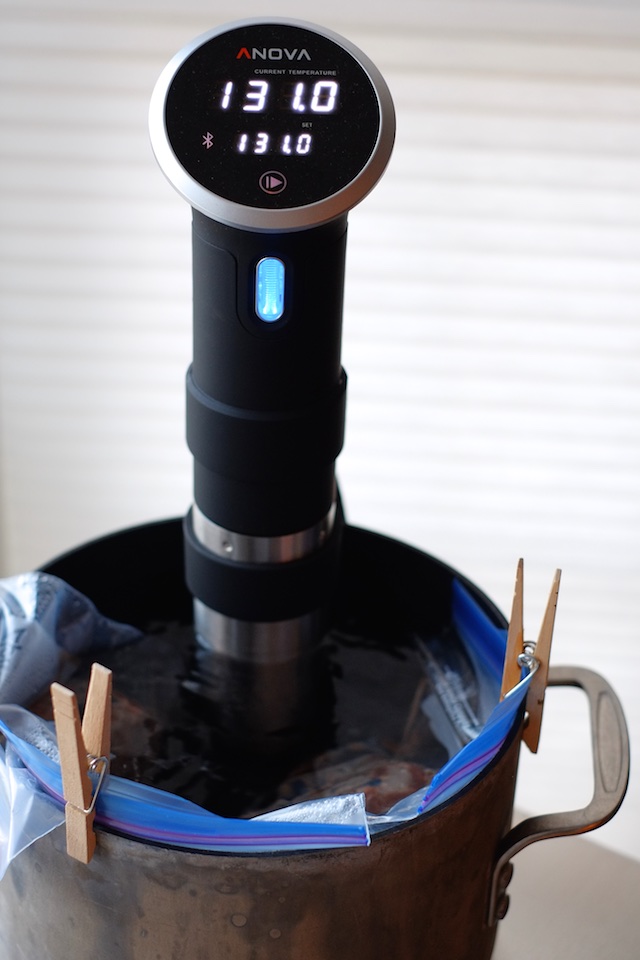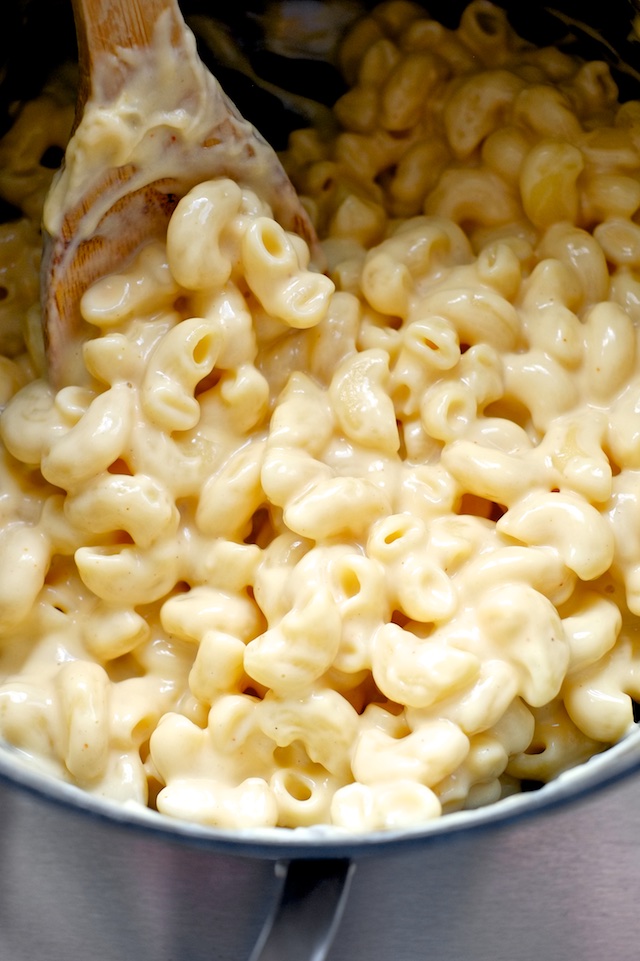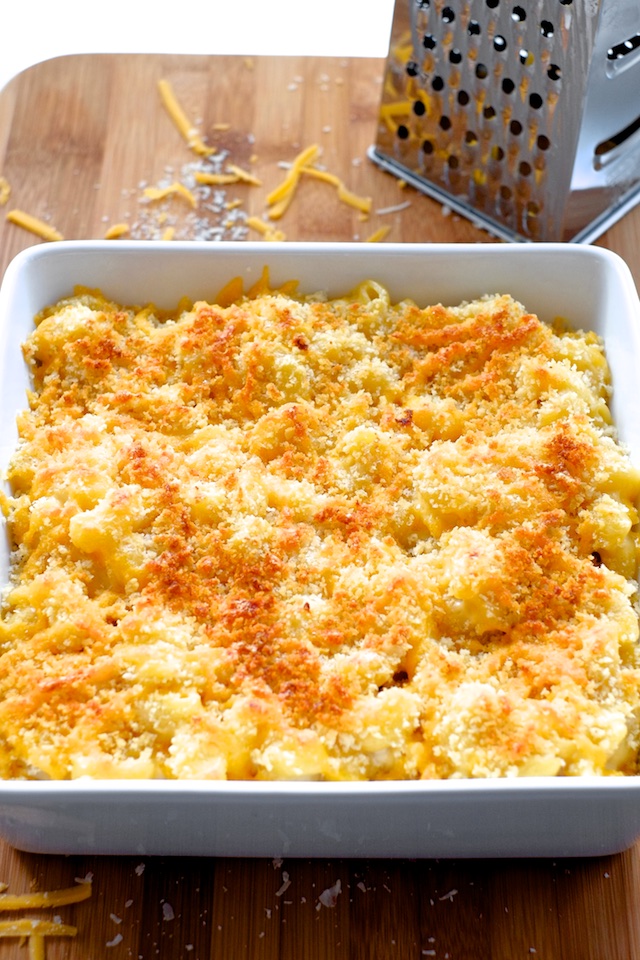
So there’s this new (-ish) fancy cooking tool called a “sous vide” machine. At first blush it seems like the kind of tool only a food nerd would own (I’ve had mine for about a year) but I have my fingers crossed that this way of cooking goes mainstream. I read somewhere recently that millennials are watching more food-centric TV and spending more money on food than previous generations but, despite the food obsession, we cook less. I think the combination of food TV and lots of dining out might have increased our expectations for what qualifies as “good” food while simultaneously knocking our kitchen confidence. We can track down an excellent food truck and order an artfully balanced series of small plates, but when it comes to making a nutritious and practical weeknight dinner from scratch…maybe not so much.
Besides, while cooking has the potential to lower our grocery bills, we all know that what cooking saves us in cash it costs us in skill development time, practical prep time, and cleanup time – and that’s when our kitchen creations actually turn out edible. What has me so excited about sous vide is it’s ability to reduce if not eliminate a lot of these problems. Sous vide machines enable top-chef level cooking with little to no skill required, less prep, and less cleanup.
So, what is sous vide?
Sous vide is the French term for cooking “under vacuum”, meaning in vacuum-sealed bags. I know, it sounds weird, but the bag part isn’t what makes it awesome. The real magic is in the temperature-controlled water bath into which these bags are submerged.
So, instead of trying to cook a piece of meat to medium-rare temperature of 135 by chucking it in a 500 degree pan and trying to flip it and take it out before it burns (but not a moment before it cooks juuuust enough) you seal your steak in a zip top bag, remove as much air as possible (it’s easy, I promise, no vacuum sealer necessary), and submerge it in a 135 degree water bath for anywhere between 45 minutes and 4 hours (or more) which makes it impossible to screw up. A quick sear in a skillet with some butter after the bath (for flavor) and you have a perfect protein specimen.
Who is it for?
Egg-lovers: Eggs are temperamental little things that really benefit from the precision and delicate handling that sous vide can provide. Those of you that especially love soft-cooked eggs or playing with custards will really enjoy what you can do with a sous vide machine.
Cash-strapped carnivores: Have you ever bought a really nice steak or roast to cook at home and completely torched it? It’s the saddest waste of money. With sous vide it’s really easy to avoid overcooking as long as you keep your sear times quick.
Or, are you too poor for nice steak to begin with? Well, one of sous-vide’s coolest tricks is it’s ability to combine temperature precision with slow-cooking. Cheaper, tougher cuts of meat that require lots of time to get tender will invariably be well-done by the time they are edible (with traditional cooking methods), but with sous vide you can take a tough cut of meat, cook it long enough to break down the connective tissue that makes it chewy, AND keep it medium-rare. It’s the craziest budget hack and it’s really, wonderfully delicious. Check out a slow-cooking medium-rare demo (with sous vide short ribs) here.
Germaphobes: The FDA recommends it’s temperatures for safe cooking because those are the temperatures at which germs instantly die in various proteins. What I didn’t realize was that pasteurization can be achieved at lower temperatures as long as the temperatures are precise and you allow adequate time for the germs to be killed off.
Being pregnant has motivated me to examine the possibilities of sous vide for pasteurization, and it’s been awesomely rewarding. With the help of some really solid research and handy charts by Douglas Baldwin I was able to pasteurize my own eggs for over-easy cooking (normally forbidden for pregos) eat medium-rare steak and even medium-rare pork with total peace of mind after following proper pasteurization temperatures and times.
Who is it not for?
I’ve heard that vegetables can be taught to do some cool things with sous vide, but if I’m honest I don’t know if it’s worth the money for the average (non-food-geek) vegetarian or vegan. Unless you’re really into eggs.
Let’s get real:
It’s not cheap: The most inexpensive non-DIY sous vide machine on the market is the Anova which costs $160 at Target. I feel like it’s worth it if it gets you cooking more and losing less food to over/under cooking, but I get that it’s an investment.
You do need a large pot, a skillet, maybe a broiler, and if you’re into it, a torch: You’ll need a big pot or heatproof vessel to use as a water bath, naturally, but it doesn’t have to cost a lot.
The one drawback with sous vide cooking is the inability to get any color on the proteins you cook. Color = flavor, so opting out for the sake of ease would be tragic (unless you’re only planning on making eggs). This is why you’ll need to invest in and learn your way around quick-browning methods like searing in a skillet, broiling, and if you’re feeling nerdy: torching.
You don’t need a vacuum sealer: Even though the name means “under vaccuum”, you don’t need a vacuum sealer to successfully cook sous vide. You can use something called the “water displacement method” which means you put your protein in a heavy duty zip-top bag, seal it most of the way, submerge the bag in water up to the unsealed corner, and then seal it up by hand after as much air as possible has worked its way out. You’ll get 95% of the air out of the bag with water displacement so it will say submerged during cooking and as long as it stays sealed, it’s just as safe as the vacuum.
Great links for getting started:
-I used the Serious Eats guide to sous vide cooking when I was getting started, and I refer to it often.
-The other page I use all the time: Douglas Baldwin’s sous vide guide and pasteurization tables.
-And lastly, my absolute favorite thing to cook in the sous vide machine: RIBS.



